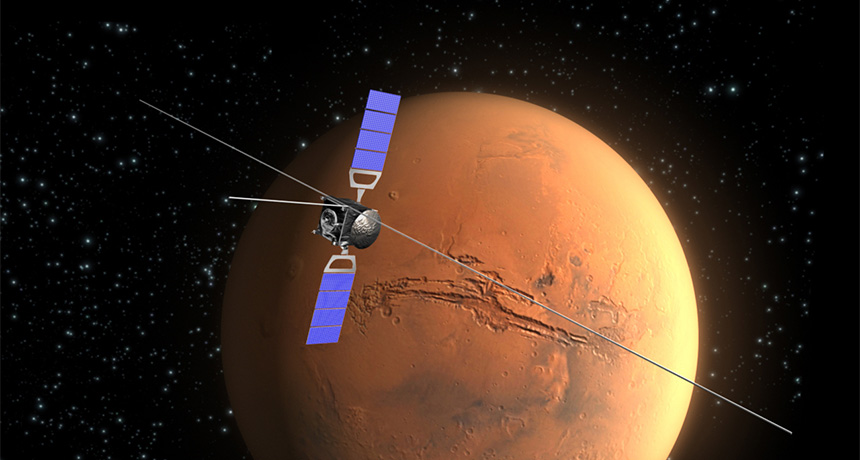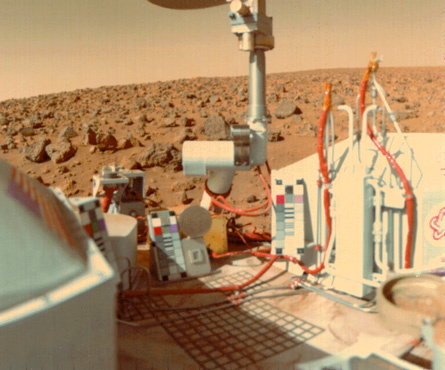Mars’ ionosphere mystery explained
Red Planet’s two layers of charged particles sometimes merge, analysis suggests

CLEARING THE AIR Disagreements between Mars-bound spacecraft (such as the Mars Express, illustrated) and the Viking landers might have to do with the time of day they conducted their investigations of the Red Planet’s ionosphere.
ESA, C. Carreau








